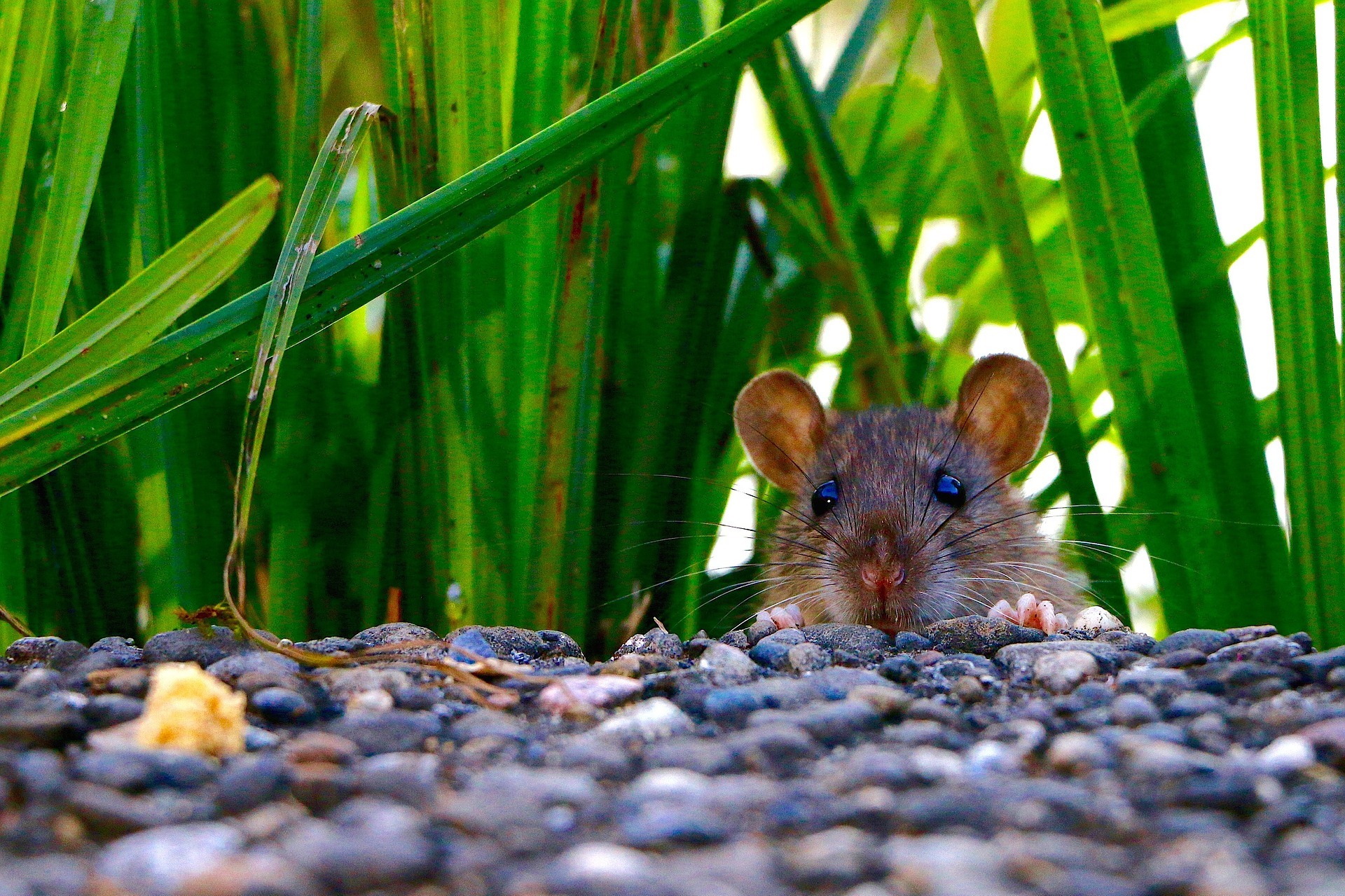How do I know if there are rats in the garden?
Posted on 6th April 2022 at 08:27
We’d all agree that rats are our commonest and nastiest, Number 1 pest going, and without a shadow of doubt they spread fear and are the one pest most likely to cause the greatest degree of upset to our customers. As well as being our most common pest inside houses, they are equally the most common garden pest popping up in parks, gardens and allotments all over the country.
How can I tell if there are rats in my garden?
You might have noticed a few odd things happening and some random disturbances in the garden but, how do you know if your visitor is actually a rat or not? Well, this blog aims to give you an insight into rat behaviour and what we as pest controllers look for when dealing with rats.
There are five telltale signs that I look for when asked to come out to deal with a customers suspected rat problem; there is a huge difference between having a rat infestation and seeing some mice running about – mice are an important part of the ecosystem and please, never think that these should be eradicated from gardens as this is wrong on so many levels.
So, what are the signs to look out for?
Burrows, paths and unexplained holes
Rat burrows
The first thing that I would look for are rat burrows, rats originated far to the East in an area now situated roughly around northern China today and they live in burrow systems underground where they are safe from predators. Modern rats still prefer to live underground for the same protection and the fact that temperatures down there are stable throughout the year.
We’ll often see burrows appearing around shed bases and where concrete pads sit as these two structures leave a dry area of soil underneath, another common area is around old dead tree stumps. The wood has rotted away leaving a network underground of soft wood where the roots radiated out, with the remains of the solid trunk in the middle keeping the soil dry.

Beaten paths
Just like the indentation that appears in the lawn which is made by repeated visits from postal workers walking across the front of the house, rats will follow the same paths over and over again.
No matter that rats are quite small and don’t wear walking boots, this repeated activity compresses vegetation and the soil leading to obvious beaten paths.
In many cases its possible to follow these paths from the rats burrow entrance to a nearby food source such as a bird feeder when they have been there long enough.

Rat run and bolt hole – now we’re talking the rat language.
The two terms rat run, and bolt hole come from our relationship with rats: a rat run is where a beaten path goes into a sheltered area like the gap between a shed and the fence. Rats prefer this type of space as they are safe from predation and so run a little bit quicker and more often creating a flatter more obvious track.
Bolt hole comes for their habit of digging numerous burrow entrances, rats will continually expand the underground structure of their colony and create additional entrances. If a predator appears then whoosh, the rat is gone straight down the nearest bolt hole to the safety of the burrow, funny, I always thought that The Bolt Hole would be a cool name for a pub.
Damage and droppings
Droppings
In my experience rats prefer to deposit in sheltered areas like underneath things, in corners and on softer items like a garden cushion or a piece of carpet. They will deposit around 40 times a day and more often than not whilst their eating so look for several droppings grouped together.
Rat droppings are about 8 to 12mm in length with rounded ends, I always think that they look like liquorice torpedoes but then I’m biased because I don’t like liquorice. When fresh they are soft and glossy and will be a brown colour, as they start to age and dry out, they harden and turn black, finally wrinkling up and eventually turning an ash grey – yes, looking at rat poo is something I do a lot of 😊.
Unexplained damage
Rats find their food through scavenging for it and they will gnaw on items for the purpose of finding out what’s inside or, on the other side, it’s in their nature as every opportunity could be a meal for a hungry rat so why not? This means that you may find a cardboard box of fertiliser which has been damaged or a plastic bag that has been shredded, likewise they will gnaw on wooden frames and on edges to see if they can open up a hole to somewhere.
Another reason for gnawing is territory marking, rats live in family groups, and they will have an area which is ‘their’ home, and they mark this by gnawing, urinating and leaving feaces. Around their territory is the area known as the range where they travel in search of food, when they encounter a source of food and if its good enough, such as stored crops inside a wooden shed, then they may start to expand their territory to take this in and so this place will be subject to marking resulting in sudden unexplained damage.
Damaged crops
If you have a vegetable patch you expect a certain degree of damage from birds and insects but if you find that your strawberries have all disappeared overnight, it probably is down to rats. Rats are omnivores and they’ll eat absolutely anything that they come across and sweet fruits will always be an attraction to them.
Root vegetables are also prized by rats, and they will dig down to find crops like carrots, but more often than not because they are such good scavengers, its stored fruit and vegetables that are at most risk. Be on the look out for teeth marks on crops and fruit and vegetables that’s been stashed away out of sight; rats will hoard food somewhere safe like beneath a piece of furniture or in a dark corner.
These are the five signs of a rat infestation and we’ve listed them in the most obvious order, you’ll know your own garden intimately and so you should be able to spot the first two signs before we get onto damage and loss of crops. Rats will take food and store it away for the future, never ignore a rat problem whether its in the garden or inside the house as any infestation will inevitably lead to some form of damage and financial loss.
Because there is rodenticide resistance to rats the best course of action should you discover a rat problem is to engage the services of a professional pest controller.
How do we know if the pest controller is a professional?
All pest controllers should be a member of one of the two UK trade bodies: the British Pest Control Association or the National Pest Technicians Association; both of these have websites which list the companies that are members, and you can search for these by area. Membership of a trade body means that your chosen company has got public liability insurance, it is also qualified to safely handle rodenticide and is aware of the hazards from using it.
There is a troubling rise in resistance to some of the active ingredients in rodenticide, if you’re using the wrong type of poison, you may in fact just be feeding the rats – check out an earlier blog on this by clicking the button, professionals will know which type of poison to use for rats in their area.
You will also want to ask for some background information from the company such as “Do they come out to collect dead rats?” and the answer to that is, YES, they are legally obliged to collect dead rodents to prevent secondary poisoning to birds of prey such as Red Kites.
To use commercial grade rodenticide, we are obliged to abide by the product label which specifies the amount of poison that can be used, where it can be used and what to do with any leftover poison and any dead rodents that turn up. There is no negotiation on the use of rodenticide as we should not use what is a potentially lethal compound unless we abide by the regulations, and this is what professional pest controllers will do.
Companies and individuals who claim to be professionals but are not, may not have the necessary liability insurance because they can’t get it without qualifications and they will refuse to collect dead rats and leave rodenticide behind after the job is completed which puts your family and pets at risk.


Tagged as: Rats
Share this post:





